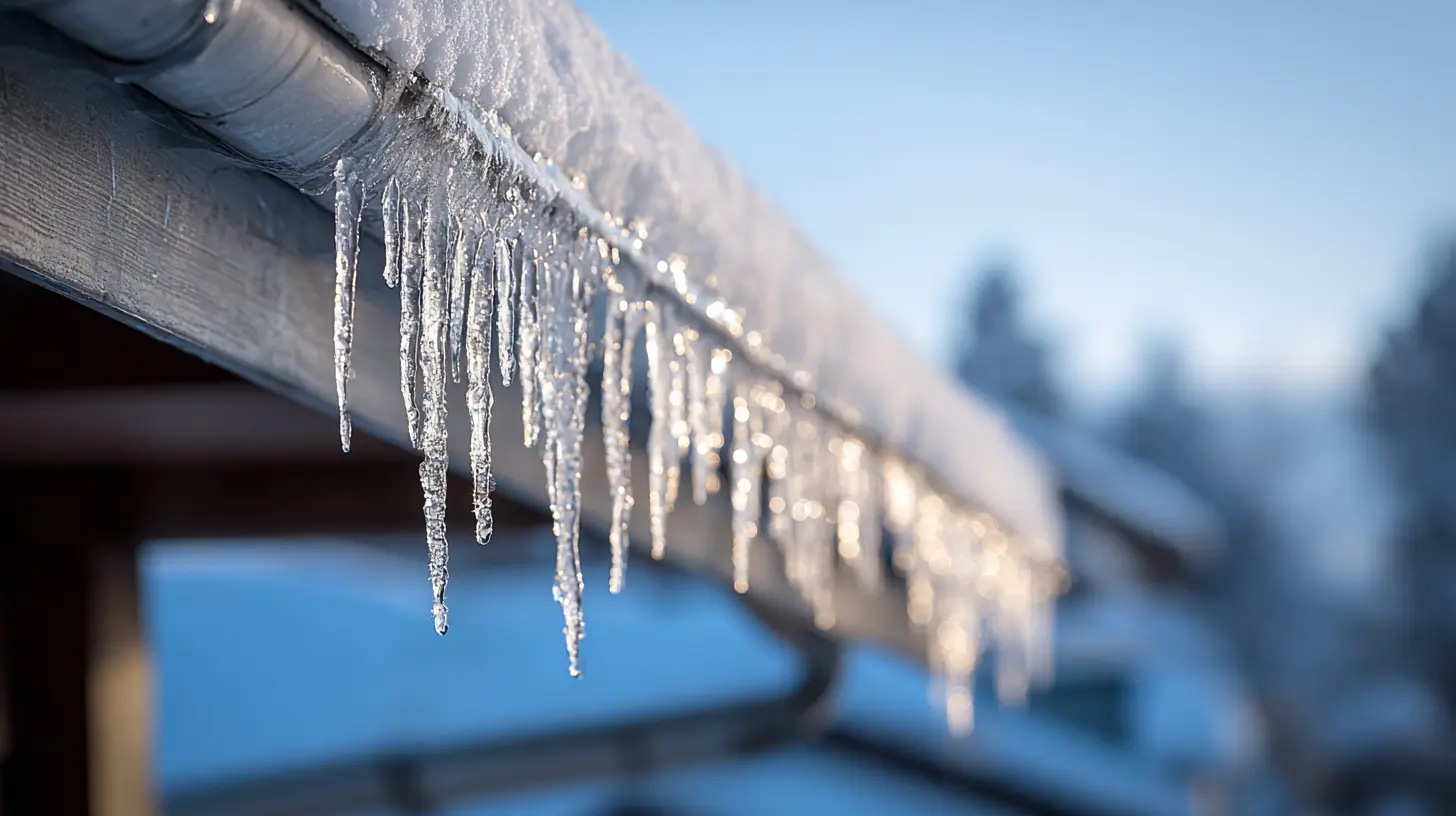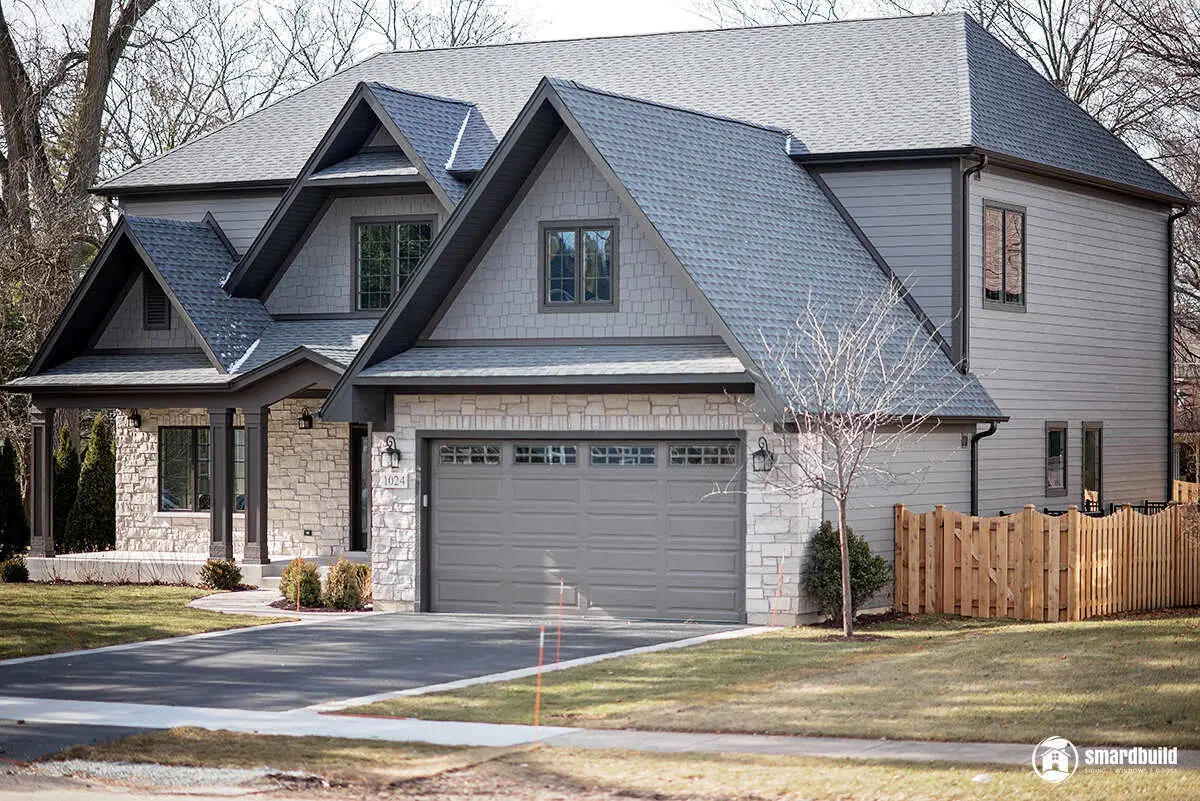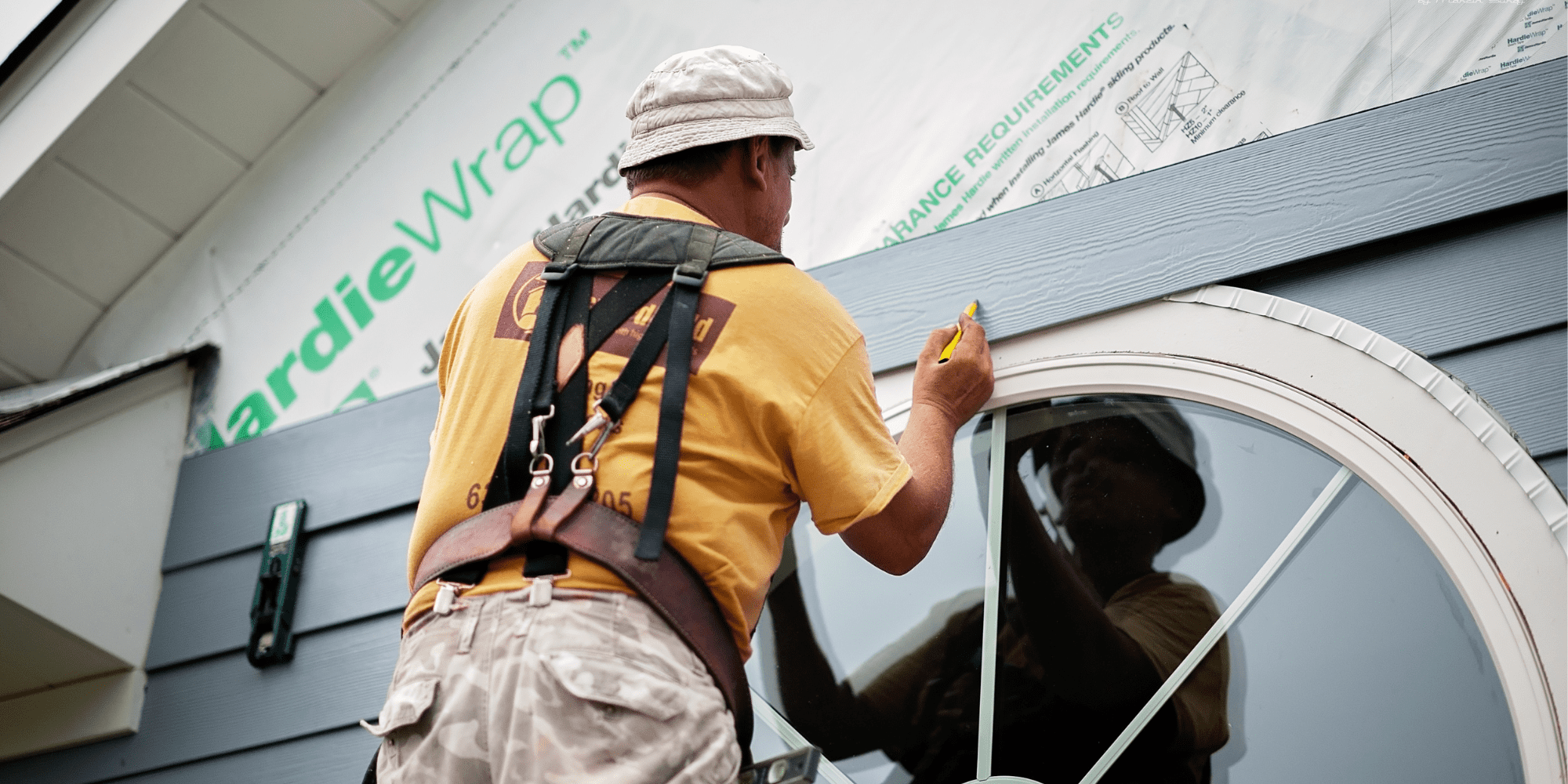Illinois winters bring beautiful snow-covered landscapes, but they also create perfect conditions for ice dams—one of the most destructive threats to your home's siding.
These frozen barriers form when poor insulation allows heat to escape, melting roof snow that refreezes at eaves and forces water behind your exterior walls. The resulting damage can cost thousands in repairs while compromising your home's structural integrity.
Understanding prevention strategies and early intervention techniques protects your investment and preserves your home's beauty through harsh Midwestern winters.

Ice dams develop when heat escaping from poorly insulated attics melts snow on roof surfaces, which then refreezes at the colder eaves, creating thick ice ridges. This barrier blocks proper drainage, forcing meltwater to seep under shingles and down siding.
Illinois' frequent freeze-thaw cycles create an environment where persistent water intrusion compromises siding integrity, leads to mold growth, and causes costly structural damage.
The accumulated ice weight can physically deform siding panels and damage trim, while repeated freezing and thawing expand trapped moisture, worsening microscopic cracks over time.
Illinois' variable winter temperatures—with daytime warming followed by nighttime freezes—amplify this damage cycle. Northern Illinois experiences particularly severe conditions with longer, colder winters and higher snowfall, increasing ice dam formation risks.
Early detection of ice dam damage protects your investment and prevents extensive repairs. Key warning signs include discoloration and streaking from mineral deposits, swelling and warping of panels, and peeling or blistering paint from trapped moisture.
Press gently on wood siding to detect soft or spongy spots indicating rot, and watch for ice accumulation along siding bases, mold growth, and rust stains near fasteners.
Different siding materials have varying vulnerabilities:
Use high-quality, flexible sealants in seams, corners, and nail penetrations, and consider upgrading to insulated panels that reduce cold infiltration.
Proper insulation is vital for controlling heat loss through attics, the primary cause of ice dam formation. Use insulation materials like spray foam, cellulose, or fiberglass batts that meet Illinois' recommended R-values for attics (R-49 in colder zones).
Before insulating, seal air leaks around vents, chimneys, and wiring to block warm air from escaping into the attic. Install insulation continuously without gaps or compression, paying special attention to attic staircases and hatches.
Balanced attic ventilation maintains consistent cold roof surface temperatures, reducing localized melting. Soffit vents introduce cool air while ridge or gable vents expel warm, moist air—this balance prevents stagnant air that traps heat and promotes ice dam formation.
Install continuous ridge vents, and use vent baffles to prevent insulation from blocking airflow channels. Clean vents annually, and consider powered attic ventilators in problem areas where natural ventilation proves insufficient.
Specialized waterproofing membranes and ice dam barriers create impermeable shields against meltwater penetration. Self-adhering ice dam membranes applied under shingles at roof edges resist water infiltration from ice dam backup.
Water-resistant house wraps installed beneath siding serve as secondary barriers, blocking liquid moisture while allowing vapor diffusion.
Proper installation requires careful overlapping of membrane edges and sealing around openings such as windows and vents. Metal or flexible flashing at critical roof eaves, corners, and siding intersections channels water safely away.
Choose UV-resistant materials that maintain integrity under temperature extremes, and apply peel-and-stick membranes specifically on roof eaves where ice dams typically form. Regular inspections after severe weather ensure barrier integrity and prevent water penetration.
Routine seasonal maintenance prevents minor issues from escalating into major damage. Conduct pre-winter inspections, checking for loose shingles, cracks, and damaged siding panels.
Clean gutters and downspouts thoroughly, trim overhanging trees, and remove snow regularly using telescoping roof rakes with soft edges. Post-storm assessments verify no new damage has occurred during winter weather events.
Professional ice dam removal requires specialized skills to avoid further damage. Contractors use low-impact steamers or calcium chloride socks to remove ice safely, followed by prompt siding repairs to prevent moisture infiltration.
Professional inspections identify hidden problems in attic ventilation and insulation, while insurance navigation assistance helps maximize claim approvals.
Schedule annual maintenance contracts for continuous attention during vulnerable periods, and hire licensed, insured contractors with local Illinois experience.
Comprehensive home upgrades tackle the root causes of ice dam formation. Upgrade roof materials with steep slopes and metal edge flashing that reduce snow accumulation.
Invest in modern attic insulation and ventilation systems, and consider heated roof edge systems with electric cables that actively melt snow along eaves.
Replace aging siding with water-resistant materials such as fiber cement or engineered vinyl that offer superior winter moisture resilience. Improve drainage infrastructure with seamless gutters and large-capacity downspouts that move meltwater away efficiently.
Smart home technologies with sensors monitoring roof temperature and snow load enable proactive prevention, while regular professional energy audits help refine strategies aligned with evolving climate patterns.
Unexpected warm spells can worsen ice dams quickly, requiring immediate protective measures.
Use snow rakes carefully to remove snow from roof edges nearest siding, reducing meltwater volume and ice dam pressure. Apply temporary waterproof tarps over exposed siding areas, securing them tightly to prevent water infiltration.
Clear gutters manually to prevent blockages that intensify water backup, and redirect downspouts away from siding using flexible extensions. Seal visible cracks with cold-applied silicone caulk for emergency patching until permanent repairs are possible.
Monitor weather forecasts closely to time interventions before predicted warm-ups, and contact professional services quickly if ice dams create hazardous conditions.
Keep roof rakes and emergency supplies accessible, and document conditions for insurance claims and future improvement decisions.
Prevention remains your most powerful defense against ice dam damage. By investing in proper insulation, maintaining balanced ventilation, and conducting regular inspections, you create multiple layers of protection that work together to keep your siding safe.
Emergency preparedness ensures you can respond quickly when conditions change, while long-term improvements address root causes rather than symptoms.
Take action before winter arrives—your home's exterior durability and your family's comfort depend on proactive planning that turns Illinois' harsh climate from a threat into a manageable seasonal challenge.
If you value true craftsmanship, transparency, dedication, and superior customer service, trust SmardBuild for all your siding needs. Call today to schedule your free initial consultation.
Yes, ice dams are largely preventable. The key is eliminating heat loss from your attic by adding adequate insulation, sealing air leaks, and ensuring balanced ventilation. Regular gutter cleaning, snow removal from roof edges, and professional energy audits also significantly reduce risks.
Coverage varies by policy, but most homeowners' insurance covers sudden damage from ice dams, including water damage to siding, walls, and interiors. However, gradual damage from repeated ice dams or lack of maintenance is typically excluded. Prevention measures like insulation upgrades usually aren't covered.
Self-adhering ice and water shield membranes are the gold standard for eave protection. These rubberized, sticky-backed sheets applied under shingles create watertight barriers against ice dam backup. Look for products rated for extreme temperatures. Combine with metal drip edge flashing for maximum protection.
Spray foam insulation provides superior ice dam prevention by sealing air leaks while insulating simultaneously. For traditional methods, combine fiberglass batts with blown-in cellulose to achieve R-49 values in Illinois attics. Seal all penetrations first, then add insulation without gaps or compression.


